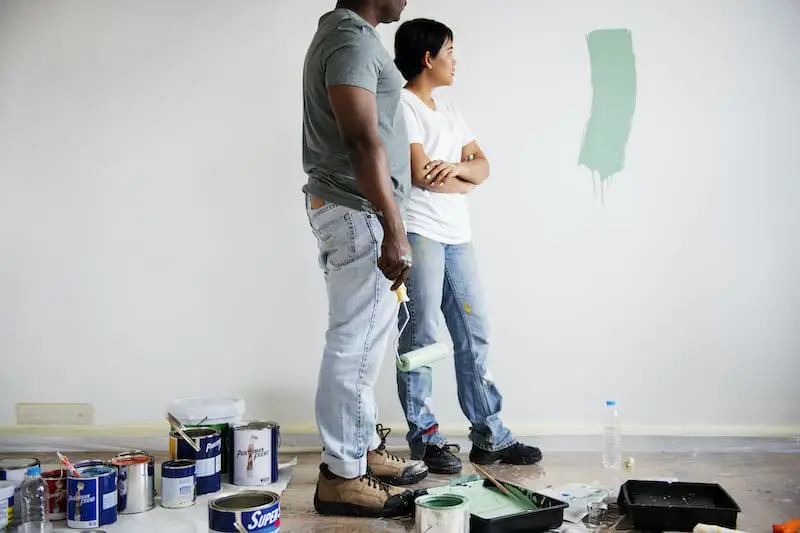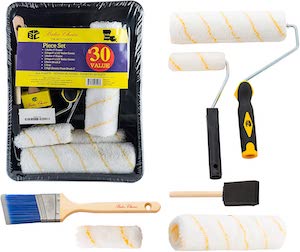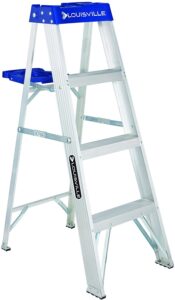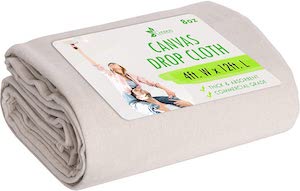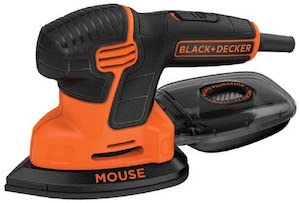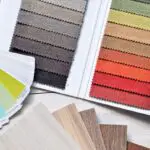This is a question that many people ask themselves when they are redecorating their home. The answer to this question is simple, however the process will take some time.
Can I just paint over my wall? Yes, as a rule you can paint over existing wall paint for an easy way to spruce up your home. However, there are a few things you need to consider before getting started. In this blog post, we will provide information on how to paint over existing wall paints in the safest way possible for your home and make sure you get the result you want.
Reasons To Paint Over Existing Wall Paint
- Existing wall paints need fixing due to a bad paint job.
- Wall colors do not match your decor anymore.
- Old peeling paint on your walls needs to be fixed.
We’ll start with the preparation you’ll need to make before beginning.
Supplies You’ll Need to Paint Over Existing Wall Paint
What Supplies to I need to paint over my wall?
- Paint Brushes / Rollers
- Painting Trays
- Tarps & Plastics
- Tape Ladder & Step Stool
- Rags
Here is an Amazon Best Seller:
Painting Ladder
Make Sure You Have Proper Ventilation When Painting
It is also important to paint in a well-ventilated area. Even if you are not using paint products which have strong odors, it can still be helpful to set up fans or open windows for at least an hour before beginning the painting process . This allows any paint particles lingering in the air time to dissipate so they do not irritate your eyes, nose, throat , and lungs when exposed for several hours during the paint application period. It’s best to work with smaller amounts of paint on each surface rather than trying to cover large areas all at once since this will reduce fumes generated from drying paints as well. You could even consider purchasing special protective masks designed specifically for indoor painters or wearing an N95 respirator mask if paint odors irritate your breathing.
Protecting Home Furnishings
For those of you who want to re-paint the walls of your house should protect your furniture from drops of paint. Move furniture which if can be transferred easily to other places. But if your home furnishings too big and difficult to move yourself enough you love pedestal cover such use newspaper or paper.
How to Prep Your Windows and Baseboards
Before you start painting, it’s important to tape your windows and baseboards first. By taping them off before you paint , there will be no paint seeping under the edges and ruining those as well . Make sure that all of the old paint is removed from around these areas so they can adhere properly to new paint coats. You should also consider removing your door knobs if possible since this step reduces a lot of extra work later on down the line when paint removal begins. In order for your home to look its best after being painted, make sure that any items which could potentially change color from wet or dry paint are covered up with special materials such as paper towels or aluminum foil. This includes things like sinks, faucets, and light switches.
Final Preps for Chipped or Cracking Paint
One reason why you should paint over existing wall paint is chipped or peeling paint. The old paint that is peeling off the walls will need to be fixed before applying a new coat of paint on top. So when painting over your wall in these cases, you will need to sand down the surface first by using an electric sander with fine grain paper attached so it can be done quickly without having too much dust being produced at once. Once finished, vacuum up all surfaces again then wipe them clean with some thinners just incase any remnants of dust still exist from sanding. Now dry out all wet areas. Make sure it dries for at least 24 hours before you can walk on it without making too much of a mess!
Electric Sander for Smoothing Painted Walls (Amazon Best Seller)
If Needed Apply Primer Before Paint
Before you apply paint, it is extremely important to ensure that the surface is prepped and ready for your new coatings. One of the most crucial steps in this process is using a high-quality primer which has an excellent adhesion property as well as being able to work with existing paint coats. Apply paint primers carefully because they can be very runny which may lead to seepage underneath any masking tape or baseboard coverings if not done properly. You should also use special materials such as paper towels or aluminum foil when painting near areas where water vapor could potentially make contact with paint layers since these products help prevent moisture damage from occurring on top of existing paint coats.
Mix the Paint
Many people wonder how to mix paint before painting. If the store didn’t already do it for you make sure your paint is mixed before beginning. Mixing and storing can be a hassle that takes up time or gets messy. To mix paint before painting, use either a wooden paint stirring stick or chuck an electric spiral power mixer attachment into your drill. This will ensure that the ratio between water and pigment is correct for each coat you apply to get great coverage on all surfaces!
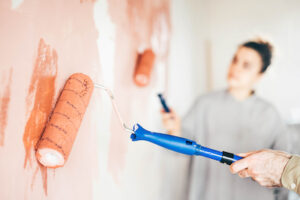
Now It’s Time To Paint
Now that your baseboards are properly prepped for paint , it’s time to start painting! It is important to go with a paint which has excellent adhesion properties so you can prevent paint from seeping underneath the tape . A high-quality primer will have these capabilities as well as being able to adhere directly onto existing paint coats without any extra steps required such as sanding down surfaces first. In many cases, primers also help protect against moisture damage since they block water vapor from passing through them very easily. Make sure that you only use products designed specifically for walls instead of those meant for other types of paint jobs.
What type of paint is best for an interior house wall?
If paint is the only thing on the surface, you can choose from latex paint or oil paint. Latex paint is water-based and often used for interior walls because it’s easy to clean up. Oil paint dries faster than latex and has more coverage; however, it will need a good solvent cleaner that works with oily surfaces afterward for clean up.
How can I speed up the painting process?
In order to paint faster, consider using a wide roller frame and cover. The most popular width on the consumer market is 12 inches because it’s easier for people with smaller hands or weaker arms to handle than other sizes such as 18 inches which can be too heavy when handled by one person alone. Whether 9 inches or 12 inches, these types of rollers will work just fine as long as everyone involved knows what their strengths are before getting started so there aren’t any surprises during this tedious process.

